The Garden’s Adobe Mud Ovens
Rise from the Ashes
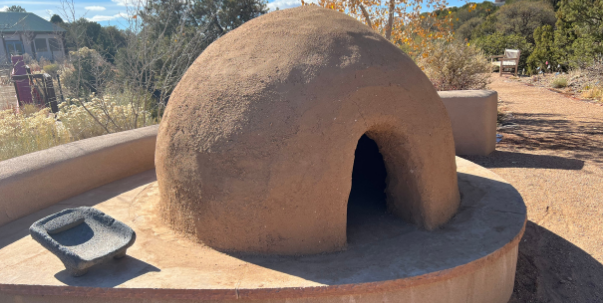
Large horno | Nov. 10, 2021
Both of the Garden’s hornos — the beehive-shaped adobe clay outdoor ovens that
are ubiquitous throughout northern New Mexico — have been rebuilt
after storm damage in 2020 caused one to collapse and left the other in need of repair.
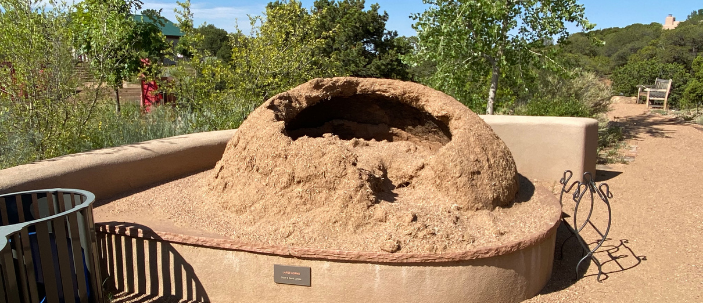
Large horno | Aug. 7, 2020
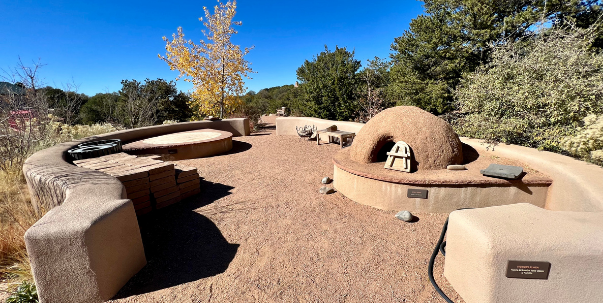
López Horno Plaza | Oct. 29, 2021
The original hornos were introduced to the public in October 2016 with the opening of Ojos y Manos: Eyes and Hands, the Garden’s hands-on ethnobotanical educational space designed to showcase the importance of plants to the lives of Native Americans and the Spanish settlers who inhabited the region hundreds of years ago. They will be an important component of the garden’s cultural education programming going forward.
Over two weekends in late October and mid-November, students in the Santa Fe Community College’s Adobe Construction Program — taught through the college’s School of Trades, Advanced Technologies and Sustainability — rebuilt the large horno from the ground up. The Garden secured the College’s help by reaching out to Kurt Gardella, who was involved in constructing the original horno and is currently teaching the Adobe Construction course remotely from his home in Germany.
Hands-On Adobe Construction Instructor Ernest Aragon, who oversaw the students’ practicum at the Garden, said most of those in the class had no prior experience building with adobe. The goal of the class was to give participants the confidence to build with adobe bricks and mud plaster. Arches and domes, integral to horno construction, were among the skill sets taught.
Where the original hornos were cob ovens — built with adobe mud sculpted over a sand mold — the new large horno was built with sun-dried adobe bricks purchased from New Mexico Earth Adobes in Albuquerque. The first layer of bricks was reinforced with Portland cement to help guard against future water damage, and lime was added into the first batch of adobe mud plaster for the same purpose. Construction of the dome was guided by a hinged, wooden radius compass to ensure uniform spacing as increasingly smaller and more vertical concentric circles of bricks were laid. Straw was added to the mud mixture used for the final coating to help prevent cracking. A final coating of glue diluted with water will help ensure the horno’s longevity.
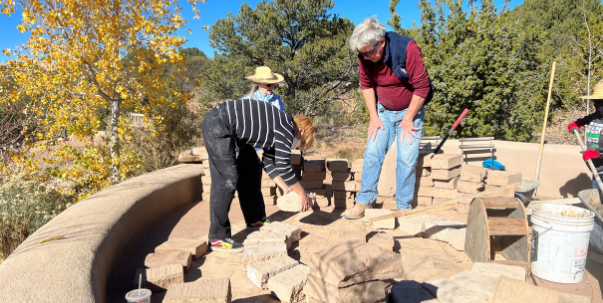
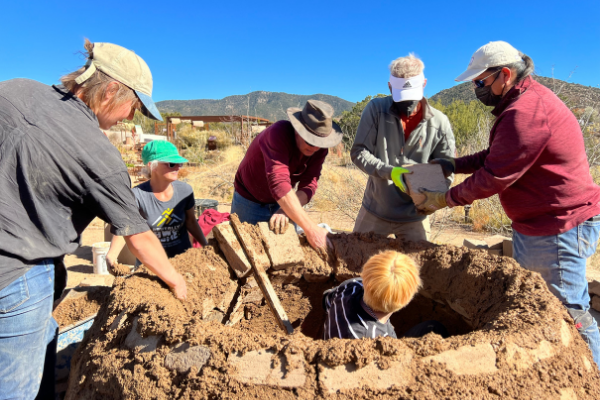
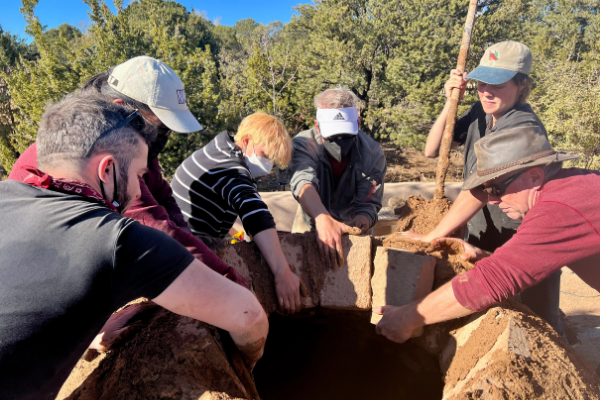
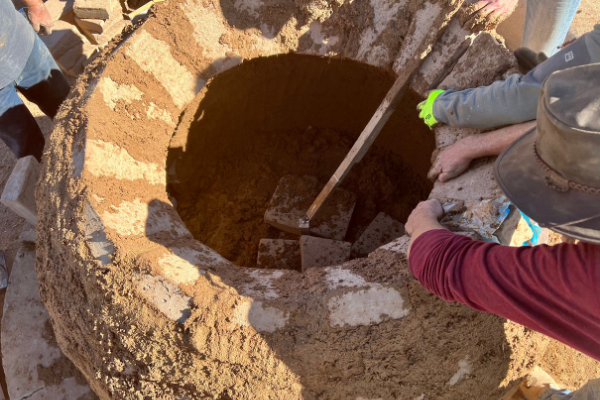
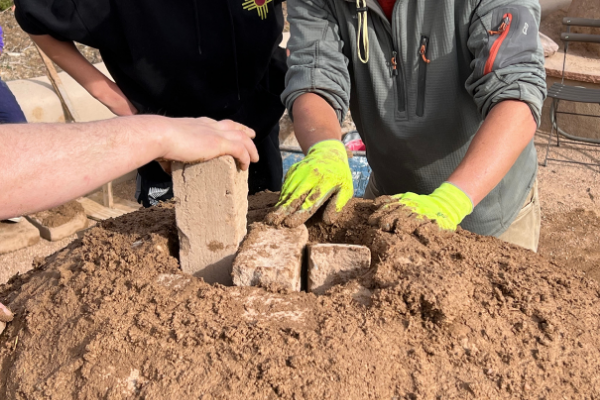
Those who played a key role in building the new horno were Mark Adorney, a retired graphic artist who moved to Santa Fe from Boston; Maxwell Cohn, a 3D fabricator for Meow Wolf; Julie Deery and Paul Davis, who want to rebuild a crumbling adobe wall on their Galisteo property; Johanna Hamblett, who is originally from New Zealand and works part-time at Earthen Touch Natural Builders; Anika Marcus, a part-time student from Ohkay Owingeh Pueblo; Shannon L. McKenna, a civil engineer from Nanbé Oweenge; and Sandra Sosa, a financial aid loan coordinator at the Community College. Two others joined the group when the final coating was applied in mid-November: Jenn Folger, a historic preservationist at Pecos National Historical Park, and David Kennedy, who retired from the film industry as a visual effects editor.
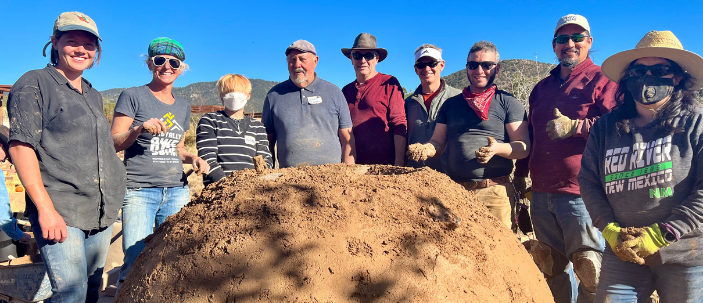
From left to right: Johanna Hamblett, Julie Deery, Anika Marcus, Instructor Ernest Aragon, Paul Davis, Mark Adorney, Maxwell Cohn, Shannon L. McKenna and Sandra Sosa
“Many thanks to the Santa Fe Botanical Garden for allowing
the students from the Santa Fe Community College’s
Adobe Construction Program to participate
in an actual, real-world construction project!
The students learned a New Mexico tradition and heritage
that can continue to be perpetuated.”
— Ernest Aragon
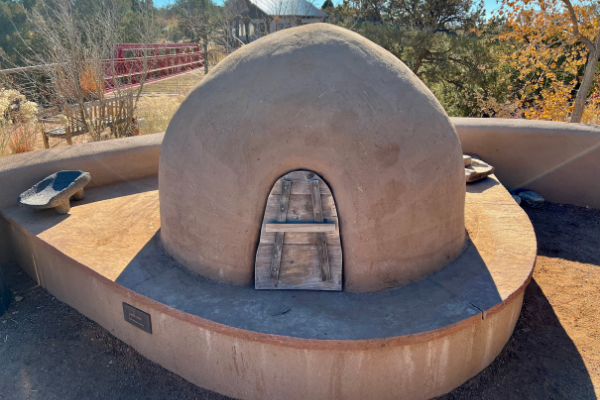
Docent Sylvan Kaufman and her husband, Jake Barnes, built the door for the new horno using aged wood that had been stored on-site.
The hornos are located in the Hornos Plaza at the far end of Kearny’s Gap Bridge, a setting made possible by a gift from Nance & Ramón Jose López y Familia. The original large horno was built with a gift from Susan and David Lummis; all of the material from the original horno was saved and re-used in construction of the new horno. The small horno was a gift from Deirde and Jim Mercurio and was repaired by Francisco “Pancho” Ochoa of Art in Adobe in July.
— Kathy Haq


